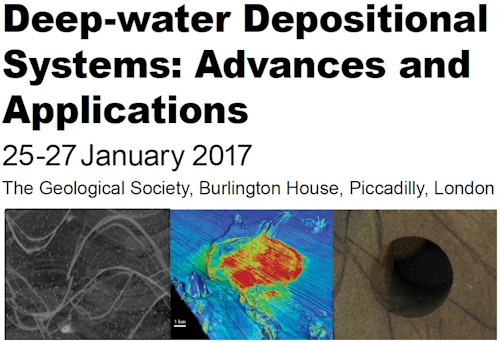Friday 24th Mar 2017
It’s that time of year again, and once again Badley Ashton will be at the AAPG Annual Conference and Exhibition in Houston to greet clients and partners, both established and new, in the main Exhibition Hall. Known for our ability to collect and integrate diverse sedimentological, petrographic and reservoir quality data sets to underpin robust geological and reservoir models, we continue to focus on delivering cost effective solutions to your reservoir challenges, especially during these difficult times. The event runs from the 2nd to the 5th of April, so why not call in and see what we can do for you? We look forward to meeting you at Booth #2439.If you would like to find out more about this year’s AAPG Annual Convention and Exhibition, please click on the link below.Additionally, Badley Ashton staff will be presenting two posters during the conference. On the Monday, Adrian Neal and Mateusz Cyprych alongside Beatriz Serrano-Suarez, one of our clients from BP will present a poster entitled “Detailed Reservoir Characterization by Integrating Core, 3-D CT Scan and Borehole Imaging Datasets” as part of the morning session – Theme 1: Siliciclastics: Innovative Techniques and Workflows. Then on the Tuesday, Matthieu Deville de Periere, Alexander Foote and Philip Hayward will present a poster entitled “Characterisation and Modelling of Fine-Grained Limestones: Lessons From Four Decades of Progress in Hydrocarbon Reservoirs” as part of the afternoon session Theme 2: Carbonates: Pore Networks: From Nano-Scale to Touching Vug & Fracture Systems. Make sure you come along and take a look. To whet your appetite, the abstracts are given below.Detailed Reservoir Characterization by Integrating Core, 3-D CT Scan and Borehole Imaging DatasetsAdrian Neal, Mateusz Cyprych, Beatriz Serrano-SuarezComputer Axial Tomography (CAT or CT scanning), is an X-ray based technique first developed in the late 1960s for medical imaging purposes. It has increasingly found applications in the earth sciences due to its ability to provide both quantitative and qualitative data regarding the internal structure of rocks and sediments, based on contrasts in density and chemical composition. The integration of 3D CT Scans from core with more traditional core description techniques, and other technologies such as borehole imaging (BHI), offers a powerful way of characterising sedimentological and structural features in a reservoir. With BHI it is possible to identify and orient geologic features over relatively long well sections (100s – 1000s of feet). However, BHI resolution is still relatively low compared to what can be observed in core, which offers very detailed insights in to the reservoir rock, but often over much shorter intervals (100s of feet at most). Despite its advantages, in slabbed core subtle features can still be difficult to see with the naked eye, especially if it is oil stained. In these cases the use of 3D CT scans offers a very high resolution image of the rock that can be used to enhance the reservoir characterisation. This study presents detailed sedimentological and structural interpretations from a deepwater turbidite reservoir, generated by integrating 3D CT scans, BHI and core-based observations. Firstly, the 3D CT scans allow more detailed recognition of sedimentary facies; commonly sandstones that seem structureless in the slabbed core are shown to be space-laminated or dewatered in the CT scans. Secondly, by using bedding features common to both the BHI and core data sets, it is possible to orient the 3D CT scans and demonstrate that interpreted fractures in the BHI correspond to deformation band sets in the core. More deformation bands are identified in the 3D CT scans than with the BHI. However, the vast majority of the fractures interpreted from the BHI match both in location and orientation those identified in the CT scans. This study therefore demonstrates that by combining core, 3D CT scans and BHI it is possible to fully orient both sedimentological and structural features in order present a more complete picture of the reservoir at a particular well location, and provide detailed calibration for wells where only BHI are available.Characterisation and Modelling of Fine-Grained Limestones: Lessons From Four Decades of Progress in Hydrocarbon ReservoirsMatthieu Deville de Periere, Alexander Foote, Philip HaywardA vast majority of the limestone deposits around the world, in both marine and lacustrine settings, are made up of fine-grained and lithified carbonate muds (particle sizes <10μm, generally called micrite). Such deposits host a variably developed micropore and nanopore-dominated pore systems (pore sizes <10μm and <1μm, respectively), which have storage capacities (ie. porosity volume) locally as good as coarser grained and macroporous deposits, and can retain permeabilities that make them viable hydrocarbon reservoirs. Such deposits have been described in most of the key worldwide hydrocarbon plays, either as supplemental secondary reservoirs within conventional reservoirs (eg. North Sea chalk, Shuaiba and Mishrif Formations in the Middle East), or as the main reservoir in their own right in unconventional plays (eg. Niobrara chalks).In addition to the interest for these deposits from a hydrocarbon production perspective, other applications include the assessment of their storage capacity for both CO2 and industrial waste. In this context, the understanding of the long-term diffusion of fluids through this very small and complex core system is key. In addition to their particular pore-scale properties, microporous reservoirs tend to display different mechanical properties compared to macroporous carbonates.Despite almost 40 years of international research, the characterisation and the origin of these microporous deposits remain challenging, mainly due to the high resolution observation tools required to analyse these micron-scale facies. The aim of this work is to present recent advances in the characterisation and prediction of microporous and nanoporous carbonate deposits. Clearly defined and readily applicable petrographical classifications provide the basis for a good understanding of how the sediments evolved through time and space. In a particular this paper presents a refined understanding of the sedimentological formation of these facies, which, in turn is critical for constraining the variations in reservoir properties and their distribution within microporous reservoirs. Finally, this work will establish criterion to explain how, why and where microporous and tight carbonates are formed within the carbonate sedimentological column, with the aim to provide a framework for their upscalling and exploration, with a particular attention to the influence of exposure surfaces and associated diagenesis affecting neritic shallow marine limestones.



